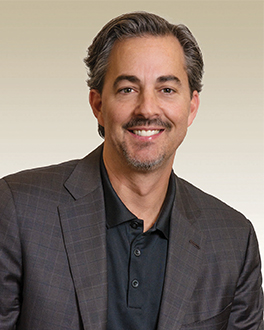Special Needs Plans Improve Care and Access
9/1/2022
Population Health Management
 Steve Fogg, chief financial officer of Marquis Companies, has been in the long term care industry since 1986 as part of a multi-generational family business in Oregon. Marquis Companies became actively engaged in population health management (PHM) in 2015, which led to the launch of its institutional special needs plan (I-SNP) named Ageright Advantage Health Plan. Provider magazine spoke with Fogg to talk about the growth of SNPs, how SNPs improve care access, and validation of the care model during the pandemic.
Steve Fogg, chief financial officer of Marquis Companies, has been in the long term care industry since 1986 as part of a multi-generational family business in Oregon. Marquis Companies became actively engaged in population health management (PHM) in 2015, which led to the launch of its institutional special needs plan (I-SNP) named Ageright Advantage Health Plan. Provider magazine spoke with Fogg to talk about the growth of SNPs, how SNPs improve care access, and validation of the care model during the pandemic.
Provider magazine: Despite the pandemic, long term care provider-led I-SNPs grew from 9 percent of all I-SNPs in 2015 to 33 percent in 2020 and 37 percent in 2021. What are you observing now about the prevalence of long term care provider-led I-SNPs? Where do you think the market will be in 5 to 10 years?
Steve Fogg: Provider-owned SNPs were probably the fastest growing segment in long term care prior to the pandemic. The desire for providers was to elevate physician services, advanced practice clinician services, and to be able to drive a better experience and outcomes. Provider-owned plans grew in terms of market share, but if you look at membership, the number of individuals that are insured under these plans, it’s not nearly as aggressive. During the pandemic, the rate of growth was not as high as it could have been. As we head out of the pandemic, there’s no reason why we won’t continue to see growth in this space with more providers wanting to enter into SNPs.
PM: How is the workforce crisis affecting long term care provider-led I-SNP availability?
SF: With the workforce shortage in general, the challenge has become so acute for providers that providers have deferred making the decision to start their own SNP. It’s slowing down the rate at which provider-owned plans and special needs plans are growing.
In the advanced practice clinician space, we’ve noticed that finding physicians and advanced practice clinicians hasn’t been nearly as difficult as finding nurses. We’ve found that there are physicians and advanced practice clinicians that are migrating to long term care because they like the day-to-day work environment versus a hospital or medical clinic environment.
PM: What challenges and opportunities in managed care do you see going forward?
SF: When I say managed care for long term care, I’m including not only the provider-owned SNPs, but also Medicare Advantage (MA) contracting. You’re going to continue to see managed care organizations increase their membership. Over the last 20 years, you’ve seen the over-65 population gradually migrating to managed care. There will be continued challenges in understanding what levels of reimbursement we need to be viable and to continue to provide services to our residents.
The other thing that you’re going to see around PHM is more MA plans subcontracting the management of population health. Those contractors will bring in automation, technology, and workforce to be more effective in managing the population health to provide better outcomes.
A huge opportunity or a challenge for certain providers will be that as MA plans continue to get greater and greater market share with those over 65, these subcontracting relationships could lead to limiting the network of facilities that they work with.
PM: What are the differences in rural vs urban long term care provider-led I-SNPs? Do these plans increase access to long term care in rural areas?
SF: Without a doubt, one of the significant advantages is the ability to bring a plan into rural facility locations. To bring in a physician or an advanced practice clinician that is in the building every day provides a resource where there may be no such resource in that rural community. In the counties where we have rural facilities, our membership penetration is almost 100 percent. It has improved the overall model of care and services provided to that rural group, so it’s a huge advantage.
PM: According to a 2021 report from ATI Advisory, successful long term care provider-led I-SNPs require strong leadership, accountability, and oversight. How can long term care leaders get buy-in and alignment to succeed with these plans?
SF: Without a doubt, the most important part is driving a culture of why this SNP will be beneficial for their facilities and for their residents. The team needs to understand that the physician or advanced practice clinician is there to give you a higher level of clinical capability to manage your residents in a more rapid and effective way as they have changes in condition and other issues.
PM: Did COVID provide any lessons learned for the model of care for the future? Did it shift how managed care is/should be done?
SF: We had two big lessons come out of the pandemic. First, having up-to-date and complete advanced care planning documentation in your facilities with your residents was critical during the pandemic. We were current and up-to-date on our advanced care planning with our residents, which allowed us flexibility and allowed us to make the right decisions that were best for the resident versus immediately sending an individual to the hospital.
The second thing we learned was the family members of our residents had security and comfort knowing that there was a physician or an advanced practice clinician in our buildings at a time that they were not able to come in and see their loved ones. Being able to talk to that level of professional if there were issues with their loved one was a huge benefit for them and us. It added to the family members feeling like their loved ones were in an environment that was more secure and capable of caring for them.
During the pandemic, there was not any reason to think that we should change the model of care, and in large part, COVID validated the importance of and why the model of care works well.

